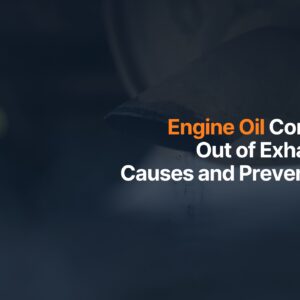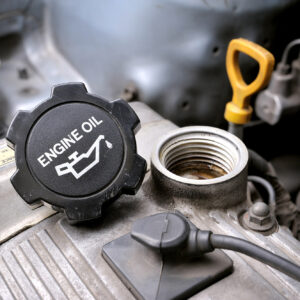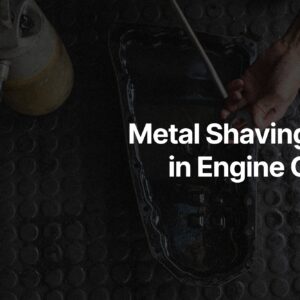While some oil in the inlet manifold is expected, it can also mean there’s a serious problem with your vehicle. Unfortunately, there are several possible reasons behind the oil in your car’s inlet manifold, so you’ll have to be extra thorough when diagnosing the issue.
Why There’s Oil in the Intake Manifold
The question is how much oil is normal? The PCV system naturally allows oil steam to mist into the manifold when the engine is shut down. That’s where all that sticky sludge comes from that you see coating the inside of the manifold. This is normal. But if there’s a lot of liquid oil puddling in the manifold, something needs to be done about it.
Here are the possible reasons why there’s oil in your vehicle’s intake manifold:
Blocked PCV Valve or PCV Vacuum Feed
The positive crankcase ventilation (PCV) valve redirects blowby gases from the crankcase to the engine. By doing so, it allows the engine to consume any unburnt fuel, preventing the buildup of sludge.
When the PCV valve or its vacuum feed pipe gets clogged or is left disconnected, these oily gases can build up, resulting in oil in the air intake manifold.fold.
Leaking Turbocharger Seals
When the turbocharger seals begin to leak, there’s only one place for that oil to go: right into the manifold.
Damaged Piston Rings
The PCV system’s purpose is to prevent blowby from building pressure in the crankcase, but if the compression rings are either worn due to time and mileage or have lost their temper due to overheating, the blowby may be more than the PCV system can handle.
When the rings have worn to a certain point, oily blowby gases will bypass the piston rings and overwhelm the PCV system to the point that oil steam is entering the manifold through both the PCV valve AND the PCV closure hose.
Clogged Air Filter
After every air filter wash of some aftermarket air filters, the filter manufacturers recommend that you apply a special oil lubricant to the filter before reinstalling it. Applying too much of this lube can cause the excess oil to flow to the intake hoses and manifold.
Oil in Intake Manifold: How Serious Is It?
Some oil in the intake manifold is fine. If your engine air filter needs a coat of lube, then you can expect to see a small amount of oil in the intake manifold. You can also expect some oil to enter the intake manifold due to blowby gases, especially if your engine is old.
However, too much oil in the inlet manifold can be bad for your engine. It can clog the spark plugs, causing your engine to misfire. In some cases, oil in the intake manifold can also cause your engine to idle roughly, stall, and exhibit other performance issues.
If too much oil leaks into the combustion chamber, it can also lead to a hydrolocked engine, which can seize up at any minute.
How Much Does It Cost To Fix Oil in the Intake Manifold?
The exact price can vary depending on several factors, such as the faulty part causing the inlet manifold leak. If the culprit behind the leak is a damaged PCV valve, then you can expect to spend anywhere from $10 to $560 on parts alone. If your vehicle needs a replacement piston ring, then it’ll cost you around $10 to $530.
Keep in mind that labor costs and other factors, such as your vehicle’s year, make, and model, can affect the total cost.
How To Prevent Oil in the Intake Manifold
Repairing an oil leak in the intake manifold can be pricey, especially if it’s done serious damage to your engine. To prevent this from happening again, here are helpful prevention tips to consider:
Check and Service the PCV System Regularly
You can remove the closure hose with the engine idling and hold your finger over the opening. You should feel the PCV pulling a slight vacuum as it draws air into the crankcase. If you see oil steam coming out that closure hose, it’s going to make it into the intake and condense there.
Change Your Engine Oil Regularly
Dirty engine oil can clog your vehicle’s oil galleries, so be sure to change your oil regularly. Depending on your vehicle’s year, make, and model, you typically have to get an oil change every 5,000 to 7,000 miles.
Clean Your Air Filter as Recommended
When cleaning your air filter, be careful not to add too much oil. Most air filter kits will specify how much oil you need to apply, so be sure to follow instructions.
Some drivers also recommend switching to paper air filters to eliminate the risk of excess oil entering the intake manifold and potentially damaging the mass air flow (MAF) sensor.
Install an Oil Catch Can
Some vehicles aren’t great at getting rid of oily gases, and if this is the case for your car, then installing a new PCV valve probably won’t be enough. To prevent oil from building up inside the intake manifold, consider investing in a catch can or an inline PCV filter.
An oil catch can is a metal container that traps oil fumes before they can enter the air intake system. You’ll have to regularly empty the can when it gets full, but it’s better than letting oil build up in the inlet manifold.
Additional Tips
- Use baffled catch cans with internal mesh or sintered bronze filters for better oil separation.
- Install check valves to prevent boost pressure from entering the crankcase in turbocharged setups.
- Ensure the system is sealed properly to maintain vacuum and avoid introducing unmetered air.
Any information provided on this Website is for informational purposes only and is not intended to replace consultation with a professional mechanic. The accuracy and timeliness of the information may change from the time of publication.
































